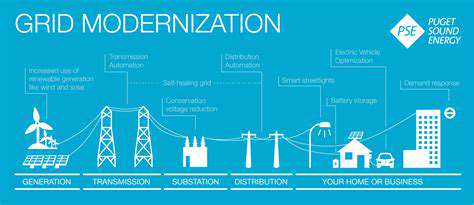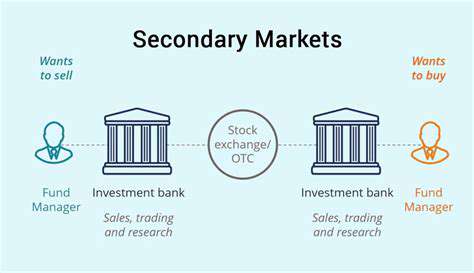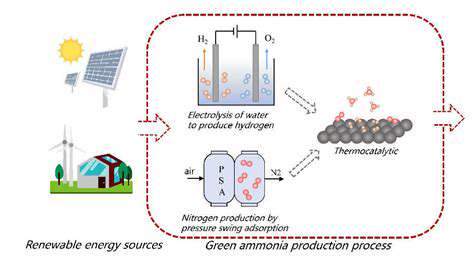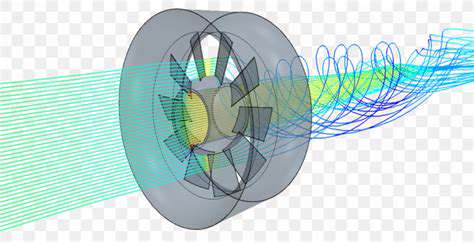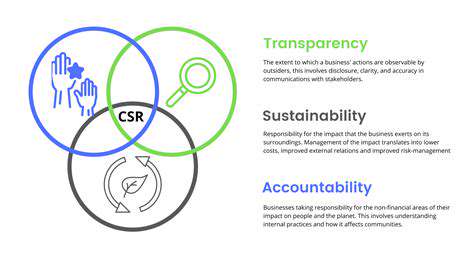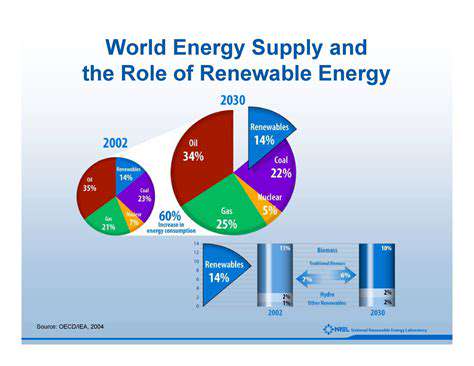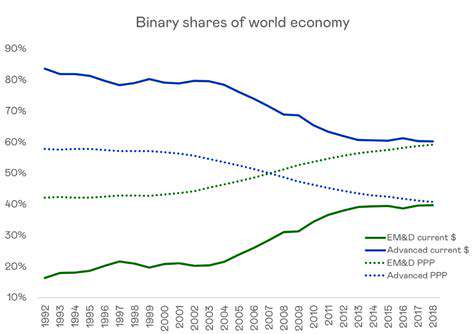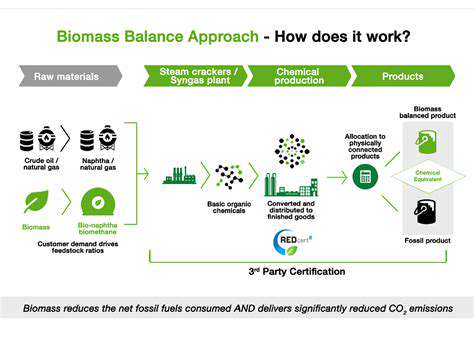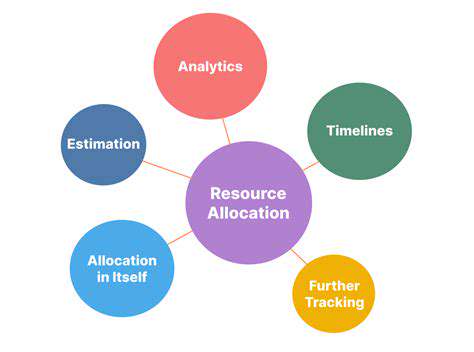Solar Energy Advancements for Heating and Cooling
Concentrated Solar Power (CSP) for Enhanced Heating and Cooling
Harnessing Solar Heat for Enhanced Heating
Concentrated Solar Power (CSP) systems excel at capturing and concentrating sunlight to generate high temperatures, making them ideal for applications requiring significant thermal energy. This concentrated solar thermal energy can be directly used for heating purposes, such as preheating industrial processes, providing hot water for buildings, and even heating swimming pools. The ability to store the heat generated during peak sunlight hours allows for continuous operation even when the sun is not shining, offering a reliable and sustainable heating solution.
By focusing sunlight onto a receiver, CSP plants create temperatures far exceeding those achievable with conventional solar thermal collectors. This concentrated heat can then be used to drive steam turbines, producing electricity, or directly applied to heating applications. The efficiency of this process, coupled with the ability to store thermal energy, makes CSP a compelling option for supplementing or even replacing traditional heating systems, especially in regions with abundant sunshine.
Cooling Solutions Powered by Solar Energy
Beyond heating, CSP technology also plays a significant role in providing cooling solutions. The concentrated heat collected by CSP systems can be used to power absorption chillers, which are more environmentally friendly than conventional vapor-compression cooling systems. These systems use the heat to drive a refrigerant cycle, creating a cooling effect within buildings and other structures.
This approach offers a sustainable alternative to conventional air conditioning, reducing reliance on fossil fuels and lowering energy consumption. The ability to store thermal energy for later use also allows for efficient cooling operation even when solar radiation is unavailable, making CSP a promising solution for creating energy-efficient cooling systems in diverse climates.
CSP's Role in Industrial Applications
The high temperatures achievable with CSP technology make it a valuable tool in various industrial processes. These systems can provide the concentrated thermal energy necessary for tasks such as preheating materials in manufacturing, thereby increasing production efficiency and reducing energy consumption within the overall process. CSP's ability to deliver consistent high temperatures positions it as a strong contender for industrial applications requiring precise temperature control.
From refining processes to chemical reactions, industries often benefit from high-temperature sources to enhance their operations. CSP systems provide a reliable and scalable solution for delivering this thermal energy, reducing energy costs, and lowering the environmental footprint of industrial facilities.
Storage Capacity and Reliability
A crucial aspect of CSP technology is its ability to store thermal energy. This storage capability ensures the system's operation even when the sun is not shining, providing a consistent supply of heat or power for heating and cooling applications. This reliability is particularly important for ensuring continuous operation in regions with fluctuating solar irradiance.
Thermal energy storage systems, often using molten salts or other suitable materials, allow CSP plants to maintain output and provide a reliable energy source throughout the day, regardless of the sun's position. This storage capability distinguishes CSP from other solar technologies, making it a more dependable and versatile energy source for diverse applications.
Economic Viability and Environmental Impact
While the initial investment costs for CSP plants can be substantial, their long-term economic viability is increasingly attractive. The reduced reliance on fossil fuels translates to lower operating costs over time, and the potential for renewable energy credits and incentives further enhance the economic advantages of CSP. As energy prices fluctuate, CSP's cost-effectiveness becomes increasingly evident.
Technological Advancements and Future Prospects
Ongoing research and development are continuously improving CSP technologies, leading to enhanced efficiency and reduced costs. Innovations in concentrating mirrors, receiver designs, and energy storage methods are significantly improving the overall performance of CSP systems. The integration of CSP with other renewable energy sources, such as wind power, is also being explored, aiming to create even more robust and reliable energy systems.
The future of CSP looks promising, with a potential to play a significant role in sustainable energy solutions. As technology advances and costs decrease, CSP's contribution to meeting global energy demands and creating a more sustainable future is likely to increase substantially.
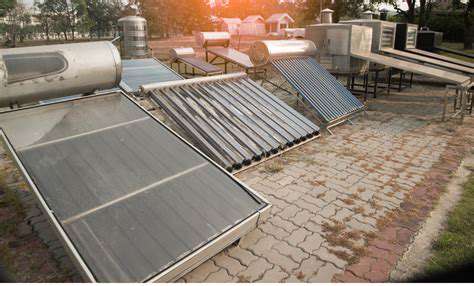
Integrating Solar into Building Design for Enhanced Efficiency
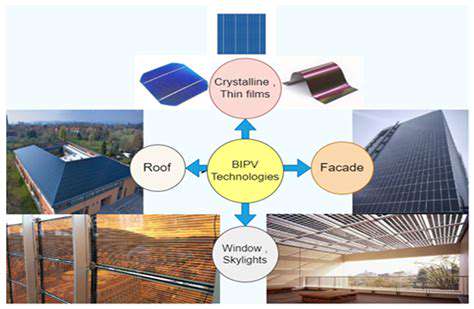
Optimizing Solar Panel Placement
Careful consideration of solar panel placement is crucial for maximizing energy generation. Factors like roof orientation, shading from trees or neighboring structures, and the angle of the sun throughout the year significantly impact the system's efficiency. Properly analyzing these factors can lead to a substantial increase in the overall energy output of the solar panel system. A professional assessment is highly recommended to ensure optimal panel placement for maximum sunlight exposure.
Employing advanced software tools and detailed site surveys can help identify the ideal locations for solar panels, ensuring they receive the maximum amount of sunlight possible. This meticulous approach not only maximizes energy production but also minimizes potential issues and ensures a long-term return on investment.
Energy Storage Solutions
Integrating energy storage solutions, such as battery systems, is essential for a reliable solar energy system. This allows for the storage of excess solar energy generated during peak hours, which can then be used during periods of low solar irradiance or at night. This significantly enhances the system's usability and reduces reliance on the grid.
Different types of battery technologies offer varying levels of capacity, cost, and lifespan. Careful consideration of these factors, alongside expected energy consumption patterns, is necessary to select the most suitable storage solution. This ensures the system can effectively meet the building's energy demands throughout the day and night.
Building-Integrated Photovoltaics (BIPV)
Building-integrated photovoltaics (BIPV) offer a seamless integration of solar energy into the building's design. BIPV panels can be incorporated into roofing materials, facades, or other structural elements, minimizing the visual impact of the solar system while generating clean energy. This aesthetically pleasing approach enhances the overall aesthetics of the building, offering a modern and sustainable solution.
By incorporating BIPV, architects and builders can optimize the energy production of the building while adhering to the design specifications. This harmonious blend of functionality and aesthetics represents a significant advancement in sustainable building practices. The aesthetic integration often leads to a higher perceived value of the property.
Financial Incentives and Regulations
Understanding the various financial incentives and regulations surrounding solar energy integration is crucial for maximizing the return on investment and ensuring compliance. Governmental incentives, tax credits, and rebates can significantly reduce the upfront costs associated with installing solar panels on a building. This can make the switch to solar energy more accessible and economically viable for building owners.
Local regulations and building codes play a significant role in the feasibility and implementation of solar energy projects. Understanding these regulations is essential for a smooth permitting process and successful project completion. Furthermore, staying updated on evolving incentives and regulations can help maximize the financial benefits of solar integration.
